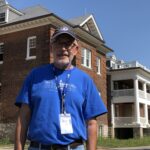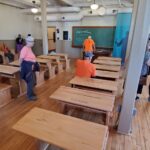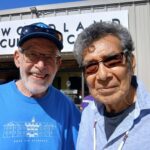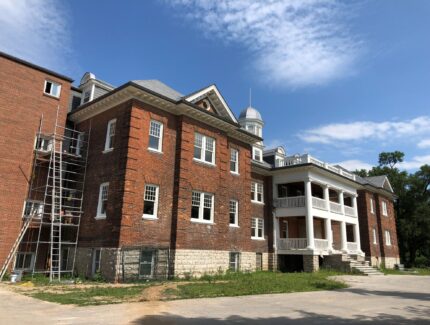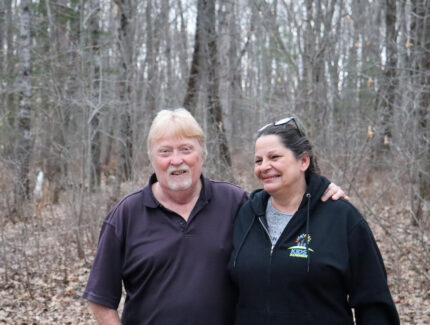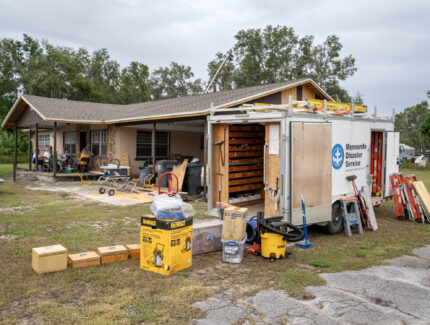
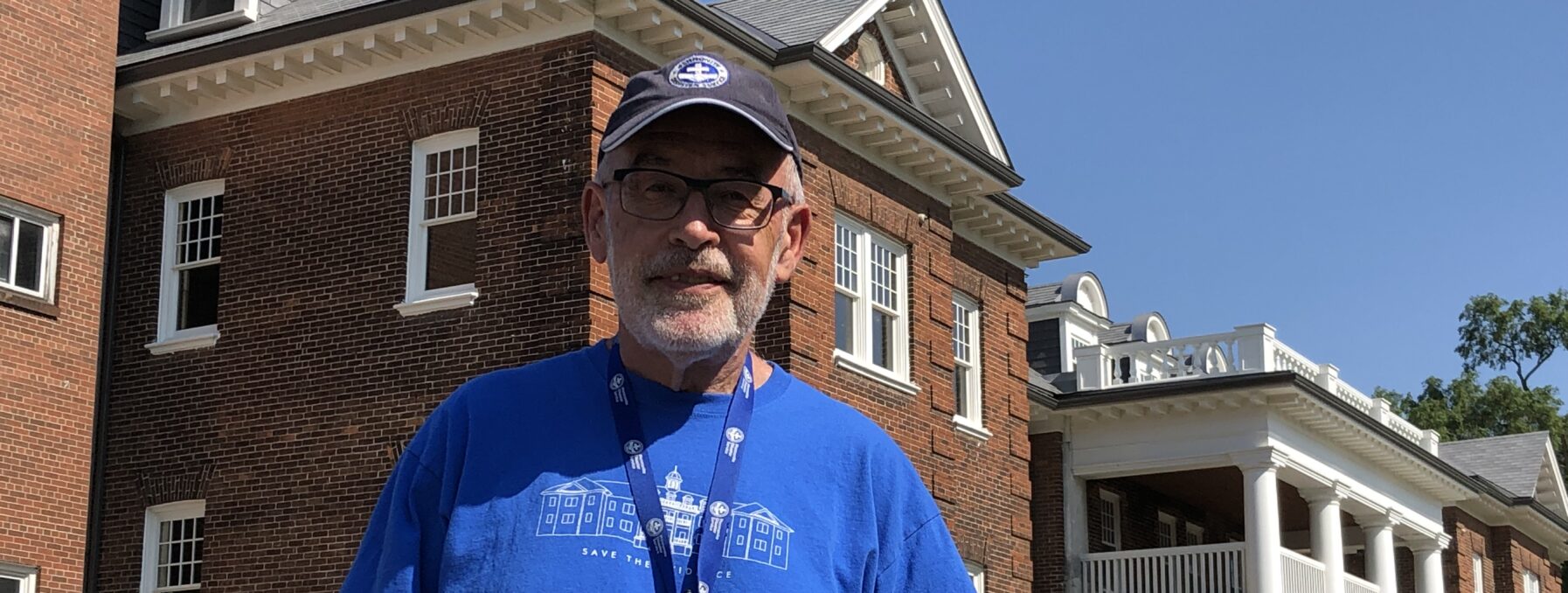
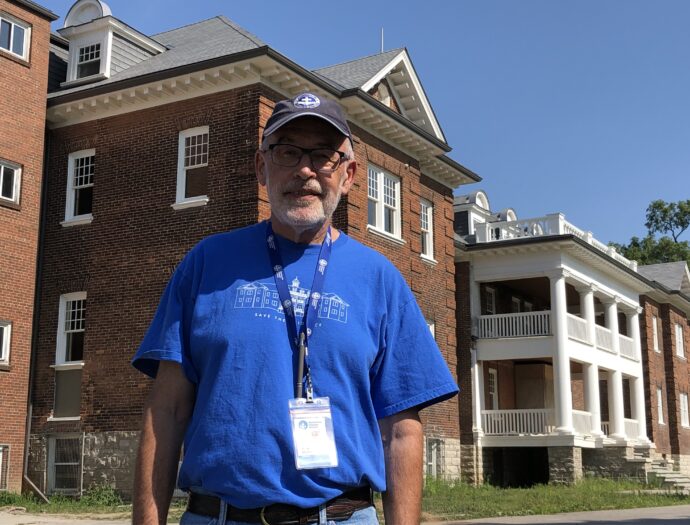
October 10, 2025
MDS volunteer reflects on grand opening of Mohawk Institute Residential School museum
“Good that MDS was able to play a small role in its restoration”
Nick Hamm in front of former Mohawk school in Brantford, Ont. Photo courtesy of John Longhurst.
The renovated Mohawk Institute Residential School had its grand opening on Sept. 30, 2025. Attending it was a moving experience for me; an estimated 3,000 people were there, many wearing orange “Every Child Matters” shirts.
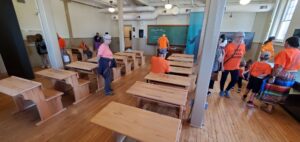
Classroom with desks built by MDS volunteers. Photo courtesy of Nick Hamm.
Being there brought back memories from 2017-19, when the Mennonite Disaster Service (MDS) Ontario Unit worked with the Mennonite Central Committee (MCC) Indigenous Neighbours Program and the Woodland Cultural Centre, owners of the former residential school, to plan the MDS Summer Youth Project (SYP) that served there in 2019.
Altogether, 74 youth from Mennonite churches in Ontario and B.C., served at the four-week project.
While there, the volunteers were not only able to do work, but also able to learn the history of this residential school. This included a weekly in-depth half day orientation, hearing and visiting with survivors, as well as hands on projects that would leave a lasting witness.
One very tangible mark left at the former school by the volunteers was the furniture they built: 18 double school desks, 11 cafeteria tables and 18 benches, all displayed in the recreated classroom and the cafeteria.
The classroom was significant for the indigenous students because it was the setting where they were indoctrinated to learn the colonialist way of life, language and customs to replace theirs, as well as a place of strict and punishing discipline.
The cafeteria was a place where siblings could get discreet glimpses of each other, but were not allowed to engage, while they ate their substandard food—the reason the former school became known to them as “The Mush Hole.”
Both the desks and tabletops have words stencilled on them to reflect the words and reflections of these children.
As I was walking through the recreated classroom, I noticed a gentleman seated at one of the school desks. He had a very contemplative look. I approached him and asked if he was a survivor. He said no, but his father had been one there. I imagined all the thoughts that were going through his mind from the stories his father had shared.
"As I contemplated all of this at the grand opening, I knew that MDS summer youth project was a highlight of my 18-plus years with MDS."
— Nick Hamm
Another survivor, an elderly woman, was brought in a wheelchair. It did not take her long to break down and start crying uncontrollably. Obviously, many dark and sad memories were being relived.
The cafeteria had a contrasting table set up on a raised platform. That’s where the staff would sit, watching the students. There is a survivor’s inscription on the wall that says: “We could see even as kids they [the staff] were eating better. They ate better than us because they could.”
A number of similar reflections have also been stencilled on the tabletops. A table was set up at the back for survivors to sit down and write down their school lunch memories.
In a side room where the senior staff ate their meals, there was a fancy table set up that had a typical meal projected onto the tabletop. It showed all the delicious food, china and silverware, along with a recorded conversation of the staff talking very negatively and condescendingly about the students. The contrast was startling.
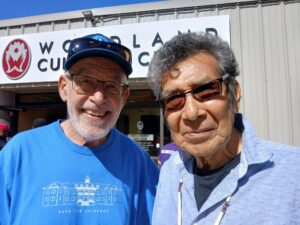
Nick and Geronimo.
Among the residential school survivors at the grand opening was Geronimo Henry, who also spoke with the youth volunteers when they served there in 2019. He spent 11 years at the school, from the age of five to sixteen, never going home for the summer holidays. When he finally left, he was not prepared for the world outside and ended up leading a broken life. Reconnecting with the school over the years as a volunteer has brought some healing.
As I contemplated all of this at the grand opening, I knew that MDS summer youth project was a highlight of my 18-plus years with MDS. It is good that this school will be used to promote Truth and Reconciliation, and good that MDS was able to play a small role in its restoration.
I also remembered what one of our survivors shared during the project orientation six years ago. “Now that you know the truth, what are you going to do about it?” It’s a question that remains with me, and it should remain for us all.
Nick Hamm is a former MDS Canada board member. He is a member of the Vineland United Mennonite Church.
Photo Gallery
